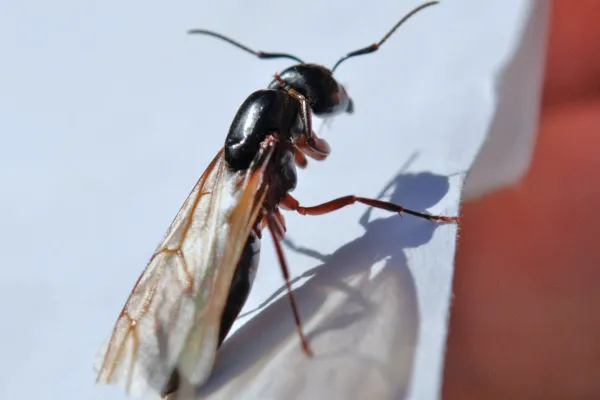Bed Bug Myths Versus Facts

Bed bugs have been a nuisance since the beginning of recorded time. The widespread use of pesticides like DDT and improved sanitation practices introduced in the mid -20th century contributed to their decline in the United States. The recent resurgence of bed bugs here in the US could be related to many different factors, not limited to the decline of interior pest control services, increases in international travel, and an increased resistance of bed bugs to the pesticides available. Most people do not have any prior experience or knowledge of bed bugs, so there is a lot of misinformation being spread around.
The following are some myths associated with bed bugs, along with the realities.
Source: Utah Bureau of Epidemiology
Myth: You can’t see a bed bug.
Reality: You can see adult bed bugs, nymphs (immature bed bugs) and eggs without a magnifying glass or microscope. An adult bed bug is about the size of an apple seed and a nymph is about the size of a sesame seed.
Myth: Bed bugs only live in dirty places.
Reality: Bed bugs are not attracted to dirt and grime; they are attracted to warmth, blood, and carbon dioxide. Anyone can get bed bugs. Bed bugs have been found in the homes of the people from all walks of life. However, houses and rooms full of clutter offer bed bugs more hiding places.
Myth: Bed bugs can transmit diseases to humans.
Reality: Bed bugs do not transmit diseases to humans through bites. According to the Centers for Disease Control and Prevention, although bed bugs are not known to transmit disease, they are a pest of significant public health importance. Bedbugs carrying medically resistant staph bacteria (MRSA) may have the potential to act as vectors for transmission. Skin irritations from bites can lead to secondary infections of the skin such as impetigo, ecthyma, and lymphanigitis. Research on the public health effects of bed bugs has been very limited over the past several decades, largely due to the noted decline in bed bug populations in the latter half of the 20th century. Now that bed bug populations are rapidly increasing, additional research is needed to determine the reasons for the resurgence, the potential for bed bugs to transmit disease and their impact on public health.
Myth: Bed bugs won’t come out if the room is brightly lit.
Reality: While bed bugs prefer darkness, keeping the light on at night won’t deter these pests from biting you. They can bite at any time.
Myth: Pesticide applications alone will easily kill and get rid of bed bug infestations.
Reality: Bed bug control is difficult and is most effective when a complete treatment approach that uses a variety of methods and constant monitoring are used. The proper use of pesticides is likely one big component of the treatment approach, but will not get rid of the problem alone.
Myth: If I throw my bed and other bed bug infested furniture out, I will no longer have a bed bug problem.
Reality: They may be called bed bugs, but they don’t just infest a bed or other furniture in the bed room. Bed bugs can hide in any dark crack or crevice in a room. Getting rid of furniture before it has been inspected and treated by an experienced pest control professional can be a costly mistake and will not solve the problem. Almost everything can be treated to remove bed bugs, but if not properly handled, the removal of furniture can simply spread an infestation to other areas of a home.
Myth: I couldn’t possibly have bed bugs because I have not been anywhere that has bed bugs.
Reality: Unfortunately, travel, whether outside of the country or within the U.S., is not the only possible source of bed bugs. Bed bugs can be found in a variety of locations such as in hotels, motels, hostels, movie theaters, public transportation, residential housing complexes, private residences, workplaces, etc. Bed bugs are great hitchhikers and can easily be brought into your home if you have visited a bed bug infested location or have brought bed bug infested items into your home such as second-hand furniture or luggage.
Myth: It can’t be bed bugs because I get bitten and nobody else in my house does.
Reality: Not everyone will have a reaction to a bed bug bite. In fact, it is possible that two people that sleep in the same bed are both bitten by bed bugs and one will breakout with welts or sores as a result of the bed bug bites and other person will not. Some people will react immediately to bed bugs bites, while for others it may take a few days.
Myth: You can feel when a bed bug is biting you.
Reality: You usually will not feel it when a bed bug is biting you, because while biting you and feeding, a bed bug injects saliva that contains an anesthetic (a numbing chemical) and an anti-clotting agent so your blood will flow freely. You likely won’t feel a thing.
We understand the value of knowledge. Arm yourself with good information, so you can make the right decisions.



